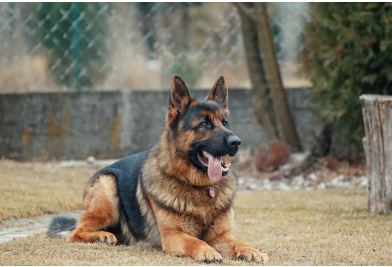Living With a Dog Diagnosed With Ivdd: Tips for Managing Their Condition at Home
Intervertebral Disc Disease or Canine IVDD is a common condition that affects many dogs around the world. It can be a challenging experience for both the pet and the owner, especially when it comes to managing their condition at home. As a responsible pet owner, it is vital to understand the symptoms and causes of IVDD and how to manage it to ensure the dog’s well-being. With the right care and attention, dogs with IVDD can lead healthy and happy lives.
Here are some tips to help manage a pet with Ivdd:
Contents
Encourage Low-Impact Exercise
While it may be tempting to keep your dog from any activity to avoid exacerbating their symptoms, regular exercise is crucial for maintaining your dog’s muscle strength and flexibility. Low-impact exercises such as walking or swimming can provide a gentle workout that won’t put too much strain on your dog’s spinal cord.
It’s important to consult with your veterinarian to determine the appropriate level of exercise for your dog’s specific condition and to avoid any activities that may cause discomfort or further injury. Encouraging low-impact exercise can be a beneficial step in helping your dog manage their IVDD and maintain their overall health and well-being.
Use Non-slip Flooring
One of the easiest ways to accomplish this is by using non-slip flooring throughout your home. Carpet and rugs with non-slip backing can provide a safe surface for your pup to walk on, particularly on hardwood or tile floors.
Additionally, you can consider using floor mats or runners in high-traffic areas to help your dog maintain their footing. By using non-slip flooring, you can greatly reduce the risk of your dog slipping and injuring themselves, helping to avoid further complications from their IVDD diagnosis.
Create a Comfortable Rest Area
To create a suitable rest area, choose a quiet and comfortable spot in your home where your furry friend can rest undisturbed. Use a comfortable bed with a firm base to support their spine and neck. Additionally, make sure the bed is big enough for them to stretch out comfortably and is made of breathable materials. You can also provide a cozy blanket to snuggle into and keep them warm.
Lastly, try to keep the area clean and tidy, free from any hazards that your dog could trip over or bump into. By creating a comfortable rest area, you can help your furry friend get the much-needed rest they require to recover from their condition.
Consider a Mobility Aid
In some cases, a mobility aid may be necessary to help your furry friend move around more comfortably. Consider purchasing a mobility aid, such as a harness or wheelchair, to assist with their movement.
These aids can help to reduce stress on their back and prevent further injury. It is essential to ensure that the mobility aid is properly fitted and adjusted for your dog’s size and weight. Incorporating a mobility aid can greatly improve their quality of life and make it easier for you to manage their condition at home.
Seek Veterinary Advice Regularly
As a dog owner, it is important to seek veterinary advice regularly when living with a dog diagnosed with IVDD. This condition requires ongoing management and monitoring, and regular check-ups with a trusted veterinarian can help ensure that your dog’s health is being properly addressed.
Your veterinarian can provide guidance on appropriate exercise routines, dietary requirements, and medication management, as well as any additional treatments that may be necessary. They can also assess your dog’s condition to determine if any changes need to be made to their care plan. Regular communication with your veterinarian can help you stay informed and provide the best possible care for your furry companion.
Conclusion
Living with a dog diagnosed with IVDD can be a challenging experience, but it is not impossible. With the right care and management, dogs with this condition can lead happy, healthy lives. By following the tips and advice outlined in this post, you can help your furry friend manage their condition and enjoy a high quality of life.
However, it is important to remember that every dog is different, and what works for one may not work for another. If you have any concerns about your dog’s health, always consult with a veterinarian who can provide individualized advice and treatment options.




